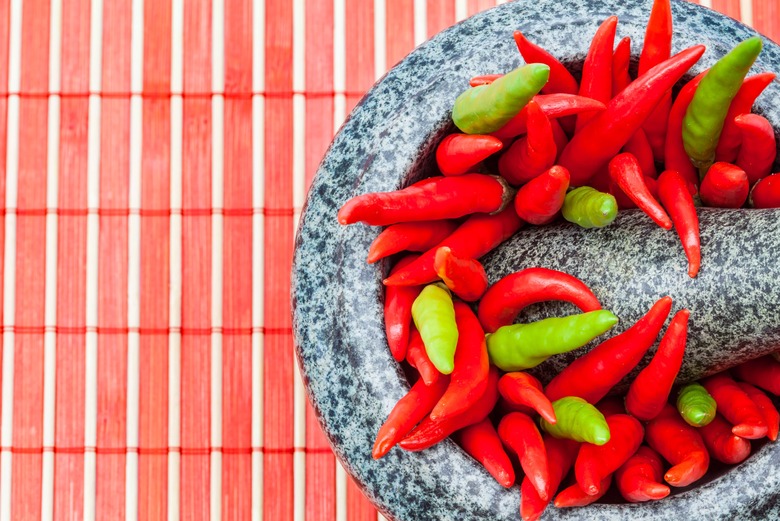Green Or Red: What Your Chile Choices Say About You In Santa Fe
If you happen to find yourself in a restaurant in Santa Fe, New Mexico, one day, you'll be faced with an important question: Red or green? (And it has nothing to do with Christmas.)
Actually, the first question you'll be asked is what you'd like to order. But given that you're in the Southwest, it'll hopefully be Southwestern food — or at least Mexican or Tex-Mex. And in New Mexico, where the state vegetable is the chile pepper (even though peppers are technically fruits), this dish will inevitably be topped with a sauce made from some variation of these delectable delicacies.
For some background, chiles (from the genus Capsicum) likely arrived in New Mexico from Central America around the 1500s, and have been bred and crossbred countless times since, resulting in newer varieties like Big Jim, Sandia, Rio Grande, Joe E. Parker, New Mexico 6-4, and Heritage 6-4. Each type has a different heat level attached to it, which is measured on the Scoville scale, using Scoville heat units (SHU). Peppers with no spice, like the bell pepper, are ranked at the bottom as zero, with serrano peppers (10,000-25,000 SHU) and Cayenne (30,000-50,000 SHU) holding down the middle, habaneros (100,000-350,000 SHU) toward the high end, and the mouth-melting Carolina Reaper at the top with an unforgiving SHU of 1,570,000. That's enough to put the merciless peppers of Quetzalacatenango to shame (and those are grown deep in the jungle primeval by the inmates of a Guatemalan insane asylum!).
So what does your choice of color — red or green — say about you as a person?
Although hotter chiles are generally perceived as being red, this doesn't necessarily mean an eater opting for red is a more daring individual looking for a bigger kick — or, conversely, that a greenie is a weenie. Any true New Mexican knows that a lot of factors — such as seed lineage, climate (especially humidity), and the soil in which they were grown — can affect the spiciness levels, and locals have likely had enough super spicy green peppers to put this myth to rest. Plus, all chiles initially start out as green anyway.
When it comes to hotness, it really boils down to the strain. For instance, Sandia reds are hotter than Sandia greens, but both of these are hotter than either color of Big Jim. There are also things that chile enthusiasts can do to make them more or less spicy, even after the peppers have been picked. Removing the pith (the veins that run the length of the chile on the inside) can decrease spiciness levels substantially, while freezing peppers reportedly increases the level. I'm not sure there's any science behind that last part, but many people swear by it.
It can also come down to taste preference, as spiciness isn't everything. (Especially if you're ordering in a restaurant, since you might not know which green chiles go into the green sauce, or which reds into the red.) While some diners are color-loyal across the board, others will alter their choice based on the specific dish they order; maybe enchiladas get green, and huevos rancheros gets red. Some folks even go for "Christmas" and get both types of sauce, bucking any sort of loyalty altogether.
In the end, to be perfectly honest, it really doesn't matter which color pepper you choose. New Mexico — where the Official State Question (yes, that's actually a thing) is "red or green?" — will love you either way. Unless of course your answer is "none." Then you can go-the-hell-back to whatever bland state you crawled out of.
